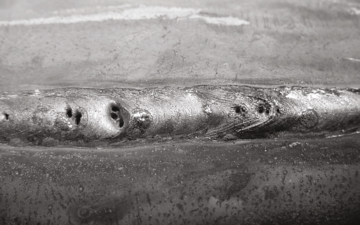Specialist Guidance on What is Porosity in Welding and Just How to Address It
Specialist Guidance on What is Porosity in Welding and Just How to Address It
Blog Article
Recognizing Porosity in Welding: Checking Out Causes, Impacts, and Prevention Methods
As specialists in the welding market are well conscious, comprehending the causes, effects, and prevention methods connected to porosity is important for attaining robust and trusted welds. By diving right into the root creates of porosity, examining its detrimental results on weld top quality, and discovering reliable prevention methods, welders can enhance their knowledge and abilities to generate top quality welds regularly.
Common Root Causes Of Porosity
Porosity in welding is largely triggered by a mix of variables such as contamination, improper shielding, and insufficient gas coverage during the welding procedure. Contamination, in the kind of dust, grease, or corrosion on the welding surface area, develops gas pockets when heated, resulting in porosity in the weld. Inappropriate securing takes place when the protecting gas, generally made use of in processes like MIG and TIG welding, is unable to completely protect the liquified weld swimming pool from responding with the bordering air, causing gas entrapment and succeeding porosity. In addition, poor gas insurance coverage, commonly because of incorrect flow rates or nozzle positioning, can leave parts of the weld unguarded, permitting porosity to form. These factors jointly contribute to the development of spaces within the weld, deteriorating its stability and possibly causing structural problems. Understanding and attending to these usual reasons are crucial action in stopping porosity and ensuring the quality and strength of welded joints.
Results on Weld High Quality
The visibility of porosity in a weld can considerably jeopardize the total high quality and stability of the welded joint. Porosity within a weld develops spaces or tooth cavities that weaken the framework, making it much more susceptible to fracturing, deterioration, and mechanical failure. These spaces serve as anxiety concentrators, reducing the load-bearing ability of the weld and enhancing the chance of premature failing under used tension. Additionally, porosity can additionally offer as prospective websites for hydrogen entrapment, more aggravating the destruction of the weld's mechanical properties.
Furthermore, porosity can hinder the efficiency of non-destructive testing (NDT) methods, making it challenging to identify other defects or gaps within the weld. This can bring about considerable safety concerns, especially in vital applications where the structural integrity of the welded parts is paramount.

Avoidance Techniques Summary
Provided the harmful effect of porosity on weld quality, efficient avoidance strategies are important to preserving the architectural integrity of welded joints. In addition, selecting the proper welding criteria, such as voltage, existing, and travel speed, can click this assist lessen the danger of porosity development. By integrating these avoidance methods into welding methods, the incident of porosity can be significantly minimized, leading to more powerful and more trustworthy bonded joints.
Value of Appropriate Protecting
Appropriate shielding in welding plays a vital duty in avoiding climatic contamination and making sure the stability of bonded joints. Securing gases, such as argon, helium, or a combination of both, are frequently made use of to secure the weld swimming pool from responding with elements in the air like oxygen and nitrogen. When these responsive elements enter into call with the hot weld swimming pool, they can create porosity, bring about weak welds with decreased mechanical properties.

Insufficient shielding can lead to different defects like porosity, spatter, and oxidation, endangering the structural honesty of the bonded joint. For that reason, sticking to proper protecting techniques is vital to create top quality welds with very little defects and make sure the longevity and dependability of the bonded components (What is Porosity).
Surveillance and Control Methods
How can welders successfully keep an eye on and regulate the welding process to guarantee optimal outcomes and prevent defects like porosity? One secret approach is via the usage of innovative monitoring innovations. These can include real-time surveillance systems that offer feedback on specifications such as voltage, existing, travel speed, and gas flow prices. By continually checking these variables, welders can identify inconsistencies from the excellent conditions and make instant modifications to avoid porosity formation.

In addition, executing correct training programs for welders is important for keeping an eye on and managing the welding procedure properly. What is Porosity. Educating welders on the significance of keeping regular parameters, such as correct gas protecting and take a trip speed, can aid prevent porosity additional reading issues. Regular assessments and accreditations can also guarantee that welders are efficient in surveillance and managing welding procedures
Moreover, the use of automated welding systems can improve surveillance and control abilities. These systems can specifically control welding criteria, reducing the probability of human mistake and guaranteeing consistent weld high quality. By combining sophisticated tracking innovations, training programs, and automated systems, welders can successfully keep track of and regulate the welding process to lessen porosity flaws and attain top notch welds.
Conclusion

Report this page